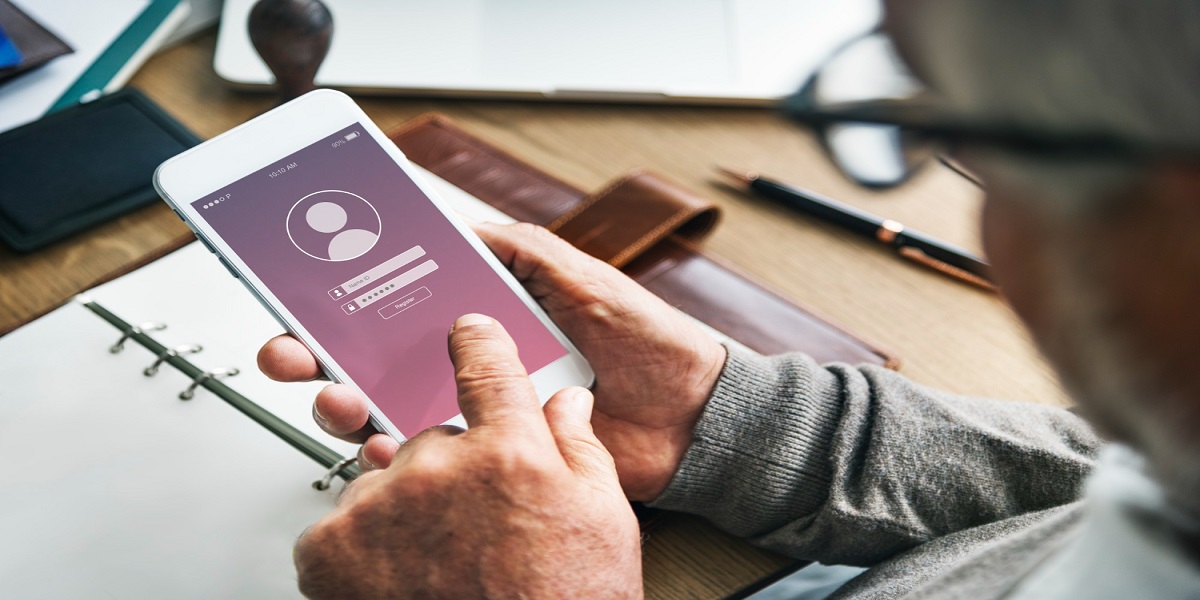
Enhancing Security in iOS App Development: Best Practices and Techniques for 2023
- By Sabine Ryhner
- 09-08-2023
- Mobile App Development
With the increasing reliance on mobile applications for various activities, security has become a paramount concern for iOS app developers. Ensuring the safety and privacy of user data has never been more critical, as cyber threats continue to evolve and pose significant risks to both users and businesses. In this blog, we will explore the best practices and techniques for enhancing security in iOS app development in 2023.
1. Secure Authentication Mechanisms:
Implementing robust authentication mechanisms is the first line of defense against unauthorized access to user accounts. In 2023, iOS app developers should adopt multifactor authentication (MFA) or biometric authentication (Touch ID or Face ID) to add an extra layer of security to user login procedures.
The basic process of incorporating secure authentication mechanisms in iOS development involves the following steps:
- User Registration and Login: The first step is to design and implement a user registration and login system. This process allows users to create accounts by providing their credentials, such as email and password. It is essential to ensure that password policies are enforced to enhance security, such as requiring strong passwords and enabling multi-factor authentication if necessary.
- OAuth and OpenID Connect: To facilitate secure user authentication, developers can leverage industry-standard protocols like OAuth and OpenID Connect. These protocols enable seamless integration with popular identity providers, such as Google or Facebook, allowing users to log in using their existing credentials.
- Token-Based Authentication: Token-based authentication is a modern approach that involves generating a unique token for each authenticated user. This token is then used for subsequent API requests, eliminating the need to repeatedly send login credentials with each request. Tokens are time-limited and securely stored, enhancing security and improving the overall performance of the app.
- Secure Data Transmission: To prevent unauthorized access to sensitive data during transmission, developers should employ secure communication protocols such as HTTPS. This ensures that all data exchanged between the app and the server is encrypted, protecting it from potential eavesdropping and tampering.
- Biometric Authentication: iOS devices come equipped with biometric authentication features like Touch ID and Face ID. Incorporating these into the app allows users to access their accounts using their fingerprints or facial recognition, providing an additional layer of security and convenience.
- Session Management: Proper session management is vital to ensure that user sessions remain secure. Implementing mechanisms to manage session timeouts and session invalidation after periods of inactivity can help prevent unauthorized access to user accounts.
- Secure Storage: To protect sensitive data stored on the device, developers should use secure storage methods such as the iOS Keychain. This ensures that sensitive information, such as user credentials or authentication tokens, remains encrypted and inaccessible to malicious actors.
By following these basic steps and incorporating secure authentication mechanisms, an iOS app development agency can build robust and secure applications that not only stay ahead of the competition but also provide users with a safe and enjoyable experience. Security should always be at the forefront of app development to protect both the users and the reputation of the app in the market.
2. Secure Data Storage:
Protecting user data stored on the device is crucial. In 2023, iOS developers must use encryption techniques such as Advanced Encryption Standard (AES) to secure sensitive data, ensuring that even if the device is compromised, the data remains unreadable.
Ensuring secure data storage is a critical aspect of iOS app development to safeguard sensitive information from unauthorized access and potential data breaches. Implementing robust security measures for data storage instills trust in users and protects their privacy.
The basic process of achieving secure data storage in iOS development involves the following steps:
- Data Encryption: Encrypting data before storing it on the device or server is a fundamental practice to prevent unauthorized access. Developers can use encryption algorithms like AES (Advanced Encryption Standard) to ensure that data is converted into unreadable ciphertext, which can only be decrypted with the appropriate keys.
- Key Management: Proper management of encryption keys is essential to maintain the security of the encrypted data. Key management systems help securely generate, store, and rotate encryption keys, ensuring that only authorized users can access sensitive data.
- Data Validation and Sanitization: Before storing any data, developers should validate and sanitize the input to prevent potential attacks like SQL injection or cross-site scripting. Implementing proper data validation ensures that only valid and safe data is stored, reducing the risk of security vulnerabilities.
- Use of iOS Keychain: The iOS Keychain is a secure and encrypted container provided by iOS for storing sensitive data, such as user credentials, authentication tokens, or other cryptographic keys. Utilizing the iOS Keychain ensures that sensitive information remains protected and inaccessible to unauthorized apps.
- Secure APIs and Data Transmission: When transmitting data between the app and the server, it is crucial to use secure communication protocols like HTTPS to encrypt the data in transit. Secure APIs and data transmission prevent man-in-the-middle attacks and data interception.
- User Permissions: Implementing granular user permissions helps control access to specific data within the app. By setting appropriate permissions, developers can limit access to sensitive data, ensuring that only authorized users can access and modify specific information.
- Secure File System Access: If the app stores data in local files, developers should ensure secure file system access and set appropriate permissions to protect sensitive data from unauthorized reading or writing.
- Data Backup and Disaster Recovery: Implementing a robust data backup and disaster recovery plan ensures that data is retrievable even in the event of data loss or system failures. Regular backups and secure storage of backup data are essential to prevent data loss.
3. Regular Security Updates:
Keeping the app updated with the latest security patches and bug fixes is vital in combating new vulnerabilities and exploits. In 2023, developers should release regular security updates to address any potential security weaknesses promptly.
Implementing regular security updates is crucial in iOS app development to ensure that the app remains protected against emerging threats and vulnerabilities. Regular security updates help maintain the integrity of the app's security posture and enhance its resilience against potential cyberattacks. The basic process of incorporating regular security updates in iOS development involves the following steps:
- Vulnerability Assessment: Conducting regular vulnerability assessments is the first step in identifying potential security weaknesses in the app. This process involves analyzing the app's code, architecture, and dependencies to detect any vulnerabilities that could be exploited by attackers.
- Stay Updated with iOS Security Patches: iOS regularly releases security patches and updates to address known vulnerabilities. Developers should stay informed about these updates and promptly apply them to the app to fix any security flaws and improve the app's security posture.
- Security Testing and Penetration Testing: Regular security testing, including penetration testing, helps assess the app's resilience against real-world attacks. Penetration testing involves simulating cyberattacks to identify potential weaknesses in the app's defenses and address them proactively.
- Implement Automated Security Scanning: Utilizing automated security scanning tools can help identify security issues more efficiently and enable continuous monitoring for potential threats. These tools can detect vulnerabilities and generate reports, allowing developers to take timely actions.
- Code Review and Bug Fixes: Regular code reviews and bug fixes play a crucial role in maintaining the app's security. Developers should thoroughly review the app's codebase to identify any potential security gaps and fix any coding errors or vulnerabilities.
- Stay Informed About Industry Best Practices: Staying up-to-date with the latest security best practices and industry standards is essential. Developers should actively participate in security forums, follow security blogs, and attend security conferences to gain insights into new threats and security measures.
- Incorporate Security in Development Process: Security should be a part of the app development process from the beginning. By adopting a secure development lifecycle, developers can build security into the app's architecture, design, and implementation, reducing the likelihood of security issues.
- Educate App Users: Educating app users about security best practices and potential risks can help them become more cautious while using the app. Developers can include security tips and reminders within the app to promote safe user behavior.
4. Secure Network Communication:
Ensuring secure communication between the app and the backend server is essential. In 2023, iOS developers should adopt the use of HTTPS with TLS/SSL to encrypt data during transmission, preventing unauthorized access to sensitive information.
Securing network communication is of utmost importance in iOS app development to safeguard sensitive data and prevent unauthorized access. The basic process of implementing secure network communication in iOS app development involves the following steps:
- Use Secure Communication Protocols: Utilize secure communication protocols such as HTTPS (Hypertext Transfer Protocol Secure) to encrypt data during transmission. HTTPS employs SSL/TLS (Secure Sockets Layer/Transport Layer Security) to establish a secure connection between the app and the server, ensuring data confidentiality and integrity.
- Certificate Pinning: Implement certificate pinning to validate the authenticity of the server's SSL certificate. This prevents man-in-the-middle attacks by ensuring that the app communicates only with a trusted server possessing a specific SSL certificate.
- Data Encryption: Encrypt sensitive data before sending it over the network. This protects data from interception and ensures that even if intercepted, the information remains unintelligible to unauthorized parties.
- Use Strong Authentication Mechanisms: Employ robust authentication mechanisms, such as OAuth or JWT (JSON Web Tokens), to verify the identity of the user or the app itself. Strong authentication prevents unauthorized access to the app's resources and data.
- Avoid Hardcoding Sensitive Information: Refrain from hardcoding sensitive information, such as API keys or passwords, directly in the app's code. Instead, store such information securely in encrypted formats, such as using the iOS Keychain or secure enclaves.
- Implement Certificate Revocation Checks: Enable certificate revocation checks to verify if the SSL certificate has been revoked or compromised. This helps ensure that the app does not communicate with a revoked server certificate.
- Disable Insecure Communication Protocols: Disable outdated and insecure communication protocols like HTTP and SSLv3. Such protocols lack modern security features and can expose the app to potential vulnerabilities.
- Thoroughly Test Network Security: Conduct rigorous security testing, including penetration testing and vulnerability assessments, to identify and address any security weaknesses in the app's network communication.
- Monitor Network Traffic: Implement network monitoring tools to track network traffic and detect any suspicious activities or unauthorized access attempts.
- Regularly Update Libraries and Dependencies: Keep all networking libraries and dependencies up to date to ensure that the app benefits from the latest security patches and enhancements.
By diligently following these steps for secure network communication, an iOS app development agency can instill confidence in app users that their data is well-protected during transmission. Secure network communication is crucial for safeguarding user privacy, maintaining the app's reputation, and complying with data protection regulations.
5. Secure Code Review:
Performing regular code reviews helps identify security vulnerabilities and weaknesses in the app's codebase. In 2023, developers should conduct thorough code reviews to ensure that best coding practices and security guidelines are followed.
6. Protection against Reverse Engineering:
Protecting the app from reverse engineering is critical to safeguard proprietary algorithms and sensitive information. In 2023, iOS developers can use techniques like code obfuscation and encryption to make it challenging for attackers to reverse engineer the app.
7. Secure Backend Development:
A robust backend infrastructure is essential for app security. In 2023, developers should ensure that the backend servers are protected with strong firewalls, secure APIs, and regularly updated software to prevent data breaches.
8. User Permissions and Privacy:
In 2023, iOS app developers should prioritize user privacy by requesting permissions only when necessary and explaining the purpose behind each permission request. Additionally, apps should adhere to privacy regulations such as GDPR and CCPA to safeguard user data.
9. Penetration Testing and Security Audits:
Conducting penetration testing and security audits on the app helps identify vulnerabilities and weaknesses before attackers can exploit them. In 2023, developers should invest in regular security assessments to fortify the app's security posture.
10. Secure Data Transmission with APIs:
Securing data transmission between the app and third-party APIs is crucial. In 2023, developers should implement secure API communication using OAuth and API keys, ensuring that data is exchanged securely.
Conclusion:
Enhancing security in iOS app development is not an option; it is a necessity. As cyber threats become more sophisticated, developers must be proactive in adopting the best practices and techniques for safeguarding user data and maintaining the trust of their users. In 2023, prioritizing secure authentication, data storage, network communication, and backend infrastructure will ensure that iOS apps remain resilient against potential security breaches. By following these security measures, iOS app developers can build apps that provide users with a safe and protected digital experience.
Recent blog

How NASA Uses Web Design to Optimize User Experience in Space Control
Web Design | 03-05-2024
Content that Converts: Digital Marketing Tactics for E-Commerce Success
E-commerce | 02-05-2024.png)




